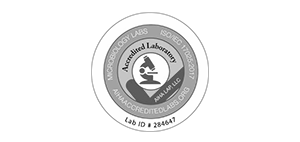
How to Detect Mold Before it Gets Out of Hand
Mold can be harmful to both you and the environment. That\’s why early detection is key: mold infestation can have dire health repercussions if left undetected.
There are a few straightforward techniques you can use to quickly detect signs of mold growth. By employing these tools, it will allow you to catch mold before it grows too large and begins causing serious health concerns.
Signs of Mold
If your home has experienced water leaks, flooding, or any other form of moisture-related issues in the past, it\’s essential that you remain alert for signs of mold growth. Even if the problem was addressed months ago, mold may return if given enough time.
Mold growth should first be investigated if your floors, walls or furniture feel damp when touched. Increased humidity levels in your home can encourage mold growth; keeping air circulating properly and drying off excess moisture are therefore vitally important to avoiding future outbreaks of this condition.
Another way to identify mold growth is to search for signs of discoloration or staining on water-damaged surfaces, usually taking on different hues such as black or brown stains.
Mold can also trigger allergic reactions in those suffering from allergies or asthma. If you think this could be happening to you, consult with your physician and consider getting tested for mold allergies.
The Odor of Mold
When walking into your home and the air smells musty, this could be a telltale sign that there is mold present. Mold has its own distinct aroma resembling wet socks or decayed wood – telltale signs.
Moldy smells may also be a telltale sign that there are other issues in your home, like poor ventilation or humidity levels, so if the odor persists it may be time for professional mold testing services.
Mold can vary significantly in terms of its aroma depending on its growth stage, digestion cycle and moisture source – making detection tricky.
Water Stains or Discoloration
When you spot any odd-looking damp patches on your walls or roof that look unpleasant, take immediate action to address it or else it could continue growing and worsening over time. A common issue, this must be dealt with promptly or it will worsen over time and eventually require professional intervention to resolve.
Water stains or discoloration can take on various colors, but typically occur due to issues in water quality such as high levels of certain minerals such as iron or manganese.
Stains may appear red, yellow, brown or black in hue and have a bitter or rusty taste when drinking well water compared to city tap water; these issues tend to be more prevalent with well water supplies than city waters and can often be most noticeable around sinks and other plumbing fixtures.
Pink stains on toilet bowls, shower curtains or sink drains may be caused by Serratia marcescens bacteria that thrives in damp conditions – a particularly common occurrence among homes using well water or low chlorine content water sources.
The Smell of Mold
Mold can produce an unpleasant musty, earthy or damp scent similar to that of decayed food, caused by microbiological volatile organic compounds (MVOCs) produced during various stages of its lifecycle.
Typically, this microbial smell is an early indicator of mold presence and often more detectable in basements or older homes that lack adequate ventilation.
Some have described this musty, damp odor as similar to wet socks or rotting wood; its intensity usually increases in the presence of mold and may prove difficult to eradicate.
Mold releases volatile organic compounds when its spores grow roots called hyphae, creating musty, damp odors in your home.







